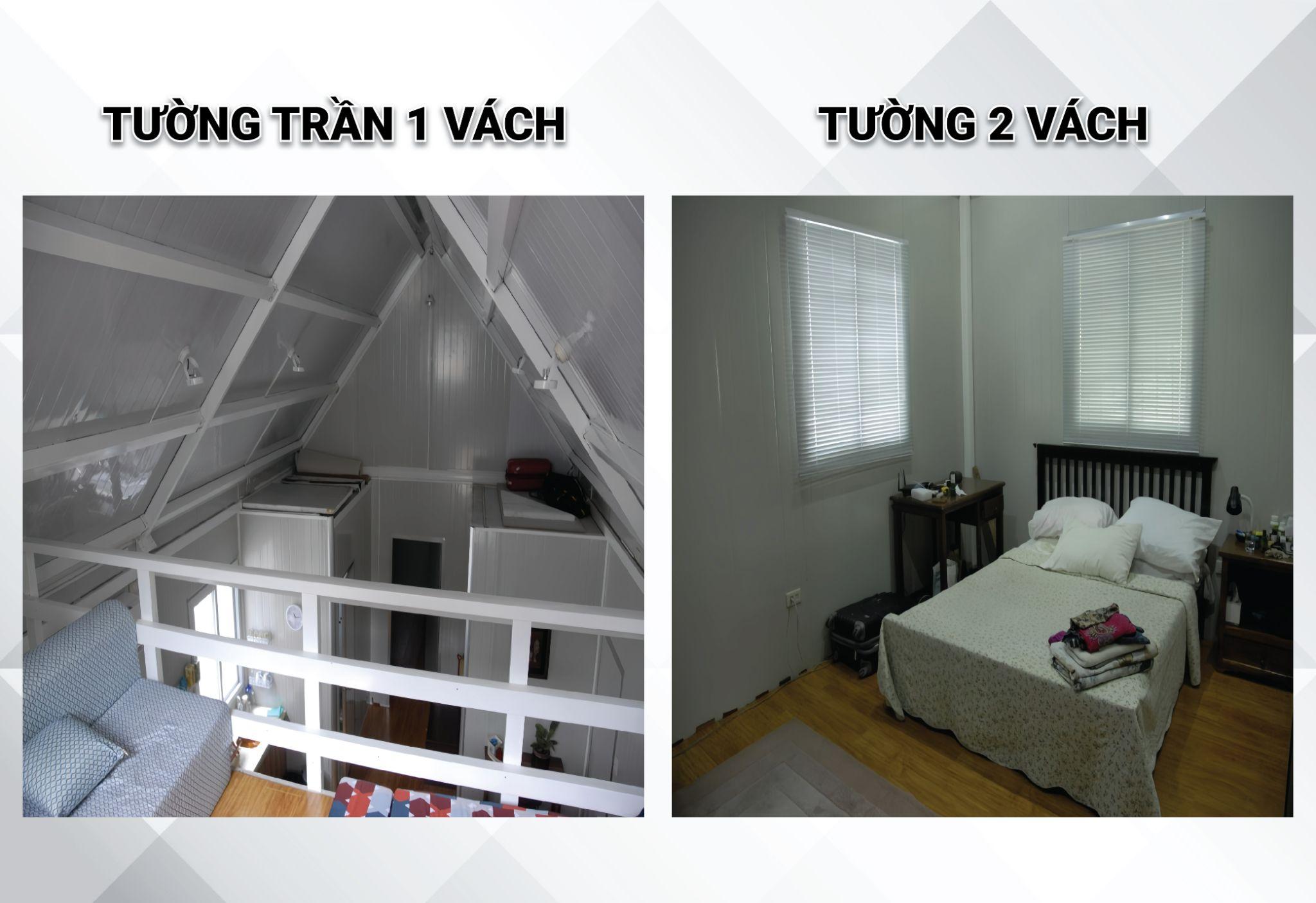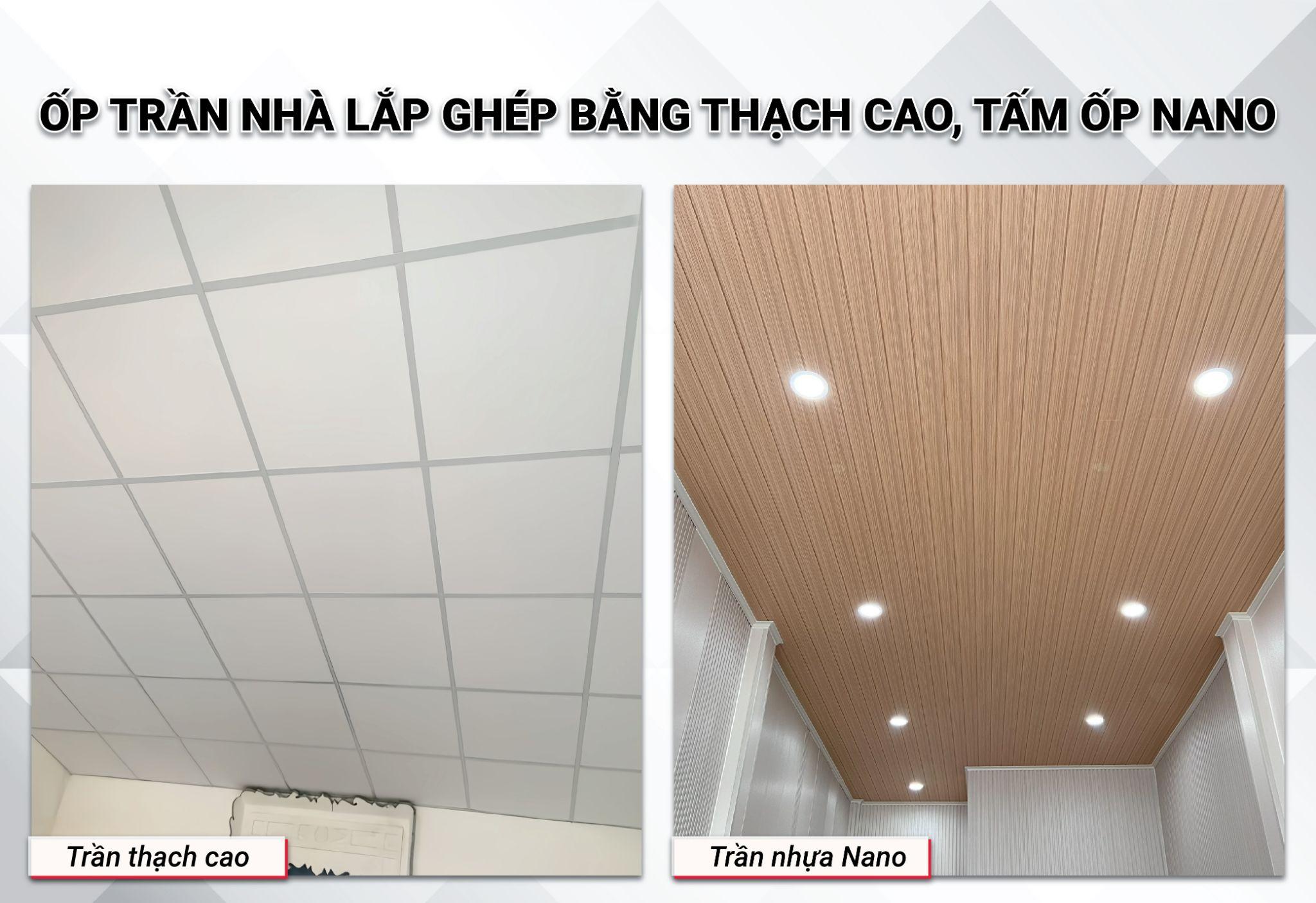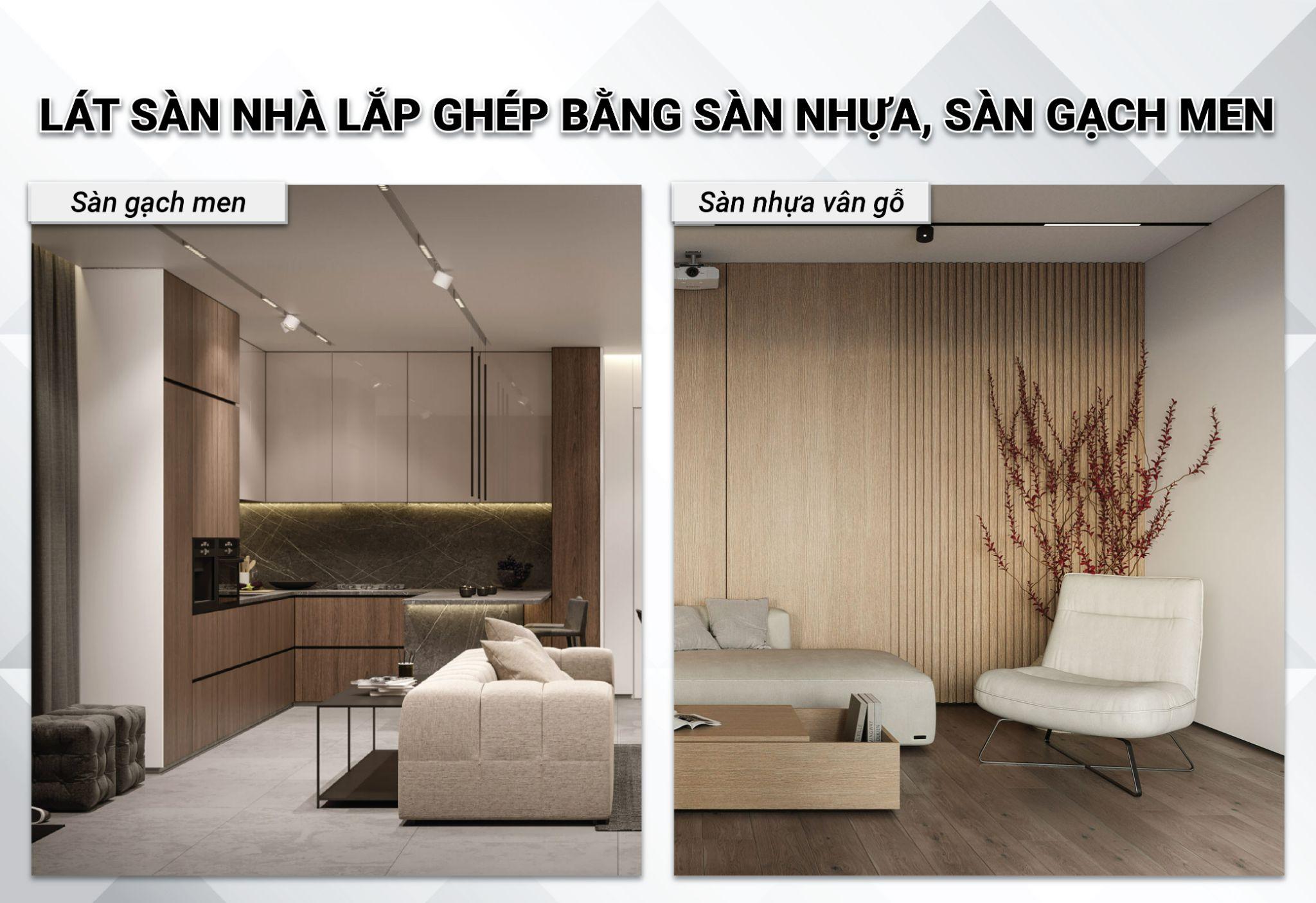Prefabricated homes typically feature a galvanized steel box frame, I-beams, and pre-assembled wall and ceiling panels. Nowadays, prefabricated homes are increasingly popular as a modern, flexible, and time-saving construction solution. Choosing the right materials is essential to achieving a perfect prefabricated home.

Modern prefabricated home construction
To address your concerns, I suggest the following solutions:
Wall Cladding with Panel Sheets and Nano Sheets
For a single-wall cladding, use panel sheets with a steel frame. Panel sheets are reasonably priced, provide good insulation and soundproofing, and are lightweight, ranging from 8 – 28kg/m3 depending on size. This makes installation quick and time-saving. However, panel sheets have a relatively lower durability of 7 – 10 years, depending on weather conditions, and their aesthetics are limited as they require exposed electrical and plumbing lines.
For a double-wall setup, the outer wall can be clad with panel sheets, while the inner wall can be finished with Nano sheets, allowing for concealed electrical wiring and an aesthetically pleasing and comfortable living space. Nano sheets are a popular choice for decorative wall and ceiling cladding in prefabricated homes due to their excellent moisture and termite resistance. They offer a wide range of designs, are easy to clean, provide effective soundproofing and insulation, and are 100% waterproof, with a lifespan of up to 20 years.
Made from PVC with added stone powder, Nano sheets are 8 – 9mm thick and remarkably lightweight at 2 – 5kg/m², significantly lighter than other materials. This reduces the load on the prefabricated home’s structure, making transportation and installation easier.

Single and double-walled prefabricated home walls
Using Nano sheets for double-walled construction will significantly increase costs compared to single-panel sheet walls. When using Nano sheets, it is essential to clean them with a soft cloth, avoiding brushes or sharp objects, and not installing them in direct sunlight, as this can affect their surface and color.
Ceiling Cladding with Gypsum and Nano Sheets
Gypsum contains over 21% of chemicals that provide excellent fire resistance and can reduce noise levels by 32-60dB, creating a safe and quiet space. However, gypsum is susceptible to water damage and should be avoided in areas with high humidity or damp weather conditions.
If you live in an area with high humidity, Nano sheets are a cost-effective option for both walls and ceilings. Their hollow structure reduces weight while maintaining strength, and they offer excellent moisture and termite resistance, soundproofing, and insulation.

Prefabricated home ceiling with gypsum and Nano sheet cladding
Prefabricated Home Flooring Options: Vinyl or Ceramic Tiles
Vinyl flooring offers superior aesthetics, scratch resistance, and moisture resistance, with a lifespan of 10 – 15 years. Additionally, vinyl flooring is easy to install and relocate, making it an ideal choice for prefabricated homes. However, cheaper vinyl options may fade when exposed to direct sunlight, and installation takes longer than ceramic tiles.
Ceramic tiles are known for their hardness, superior load-bearing capacity, and quick installation. However, they lack the aesthetic appeal of vinyl flooring and cannot easily replicate natural wood grain effects. Once installed, ceramic tiles cannot be easily removed or relocated, making it challenging for homeowners who wish to redecorate or move their prefabricated homes.

Prefabricated home flooring options: vinyl and ceramic tiles
In summary, to prevent termite infestation, ensure safety, and facilitate easy maintenance of your prefabricated home, consider using materials such as panel sheets, Nano sheets, gypsum, vinyl flooring, and ceramic tiles. These materials are suitable for your project and will enhance the overall quality and durability of your prefabricated home.
Tran Quang Hoi
Expert from Kosmos Vietnam
Specializing in sustainable material solutions for floors, walls, and ceilings.
Selecting the right decorative materials for your prefabricated home is a crucial decision that impacts aesthetics, durability, and cost. The following table outlines the criteria for choosing suitable materials for prefabricated homes.
|
Criteria |
Description |
|
Termite Resistance |
100% resistance to termite infestation |
|
Moisture Resistance |
No damage when exposed to high humidity (>80%) |
|
Safety |
Free from toxic chemicals, slip-resistant, and compliant with health and safety standards (E1, E0, and B1 fire resistance) |
|
Ease of Cleaning |
Easy to clean surface that resists dirt and kills 99% of bacteria after cleaning |
|
Suitability for Space |
Appropriate size and weight for the project |
|
Design Compatibility |
Color and style that complement the interior design |
Take the time to thoroughly research these materials and seek expert advice to make informed decisions for your prefabricated home project.

































